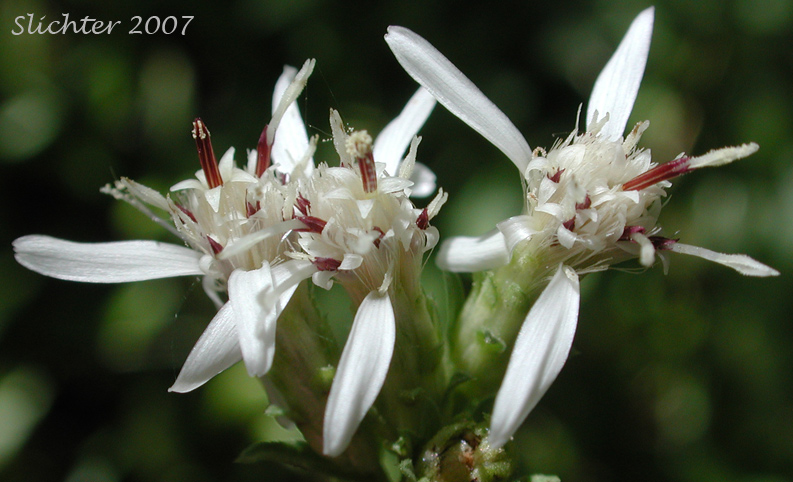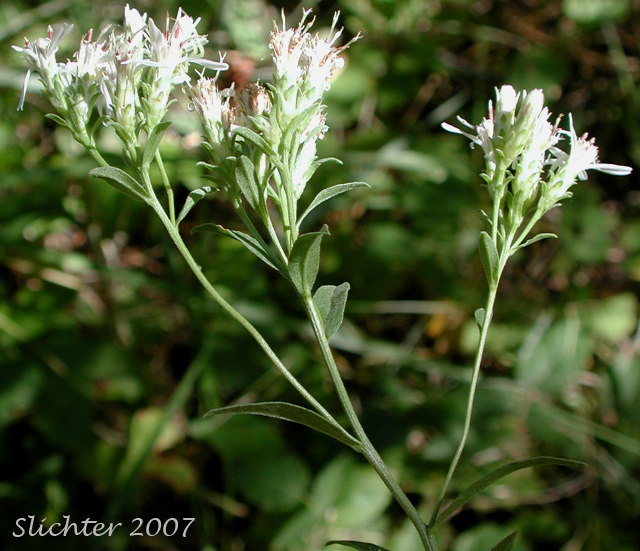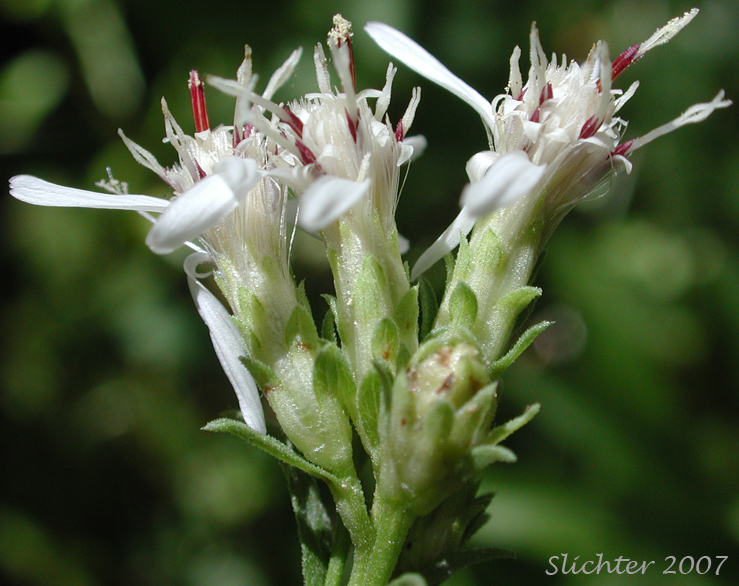
Sericocarpus oregonensis var. oregonensis
formerly Aster oregonensis

 The photo above shows the inflorescence of Oregon white-top aster as seen near Bonneville, WA........................September 12, 2007.
The photo above shows the inflorescence of Oregon white-top aster as seen near Bonneville, WA........................September 12, 2007.
Oregon white-top aster is a perennial wildflower with stems from 40-120 cm high. The stems are often branched above and bear several to many small clusters of flower heads. The leaves are lance-elliptic or oblanceolate with prominent midveins and measure from 4-8 cm long and up to 1 cm wide.. The upper surface of the blades are rough in texture while the lower surface is glandular or roughened. The lower leaves frequently wither and drop quickly as the plant elongates.
The inflorescence is a many flowered panicle with the heads in close clusters. The involucres are 7-8 mm high with keeled midribs on the bracts. The bracts are whitish below and greenish and herbaceous at the spreading tips. The 4-7 rays are white and measure 4-7 mm long. The 13-21 disk flowers are pale yellow in color with purple anthers.
Oregon white-top aster may be found in dry open woods.
Oregon white-top aster is found west of the Cascade summit from southwestern Washington south through Oregon to California.
In the Columbia River gorge, it may be found between the elevations of 300'-900' from the Bridge of the Gods east to Stevenson, WA.
